Endometriosis and its global research architecture: an in-depth density-equalizing mapping analysis
- PMID: 27653503
- PMCID: PMC5031306
- DOI: 10.1186/s12905-016-0336-0
Endometriosis and its global research architecture: an in-depth density-equalizing mapping analysis
Abstract
Background: Endometriosis is one of the most common gynecological diseases. It is still a chameleon in many aspects and urges intense research activities in the fields of diagnosis, therapy and prevention. Despite the need to foster research in this area, no in-depth analysis of the global architecture of endometriosis research exists yet.
Methods: We here used the NewQIS platform to conduct a density equalizing mapping study, using the Web of Science as database with endometriosis related entries between 1900 and 2009. Density equalizing maps of global endometriosis research encompassing country-specific publication activities, and semi-qualitative indices such as country specific citations, citation rates, h-Indices were created.
Results: In total, 11,056 entries related to endometriosis were found. The USA was leading the field with 3705 publications followed by the United Kingdom (952) and Japan (846). Concerning overall citations and country-specific h-Indices, the USA again was the leading nation with 74,592 citations and a modified h-Index of 103, followed by the UK with 15,175 citations (h-Index 57). Regarding the citation rate, Sweden and Belgium were at top positions with rates of 22.46 and 22.26, respectively. Concerning collaborative studies, there was a steep increase in numbers present; analysis of the chronological evolution indicated a strong increase in international collaborations in the past 10 years.
Conclusions: This study is the first analysis that illustrates the global endometriosis research architecture. It shows that endometriosis research is constantly gaining importance but also underlines the need for further efforts and investments to foster research and ultimately improve endometriosis management on a global scale.
Keywords: Density equalizing; Endometriosis; Mapping; Research architecture.
Figures
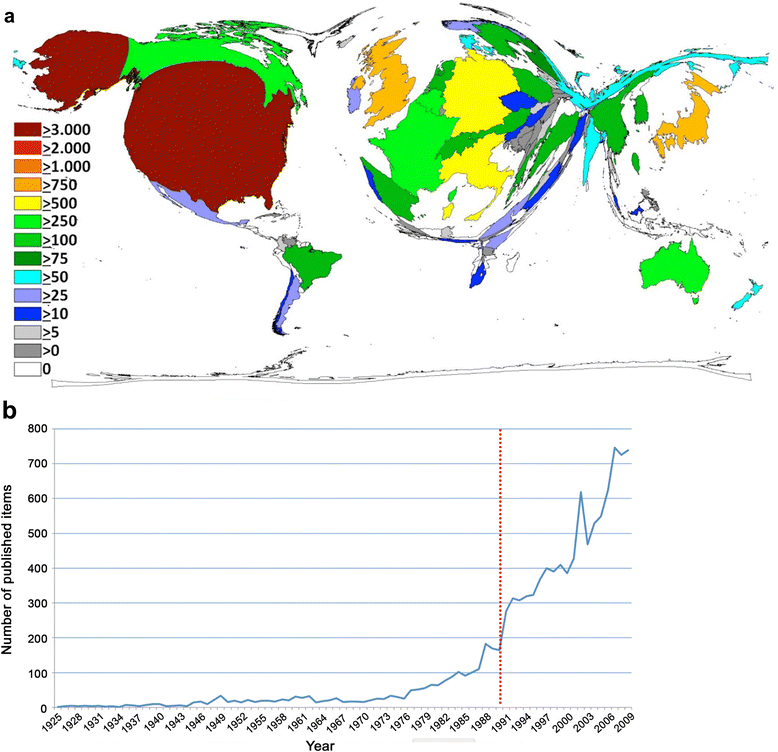
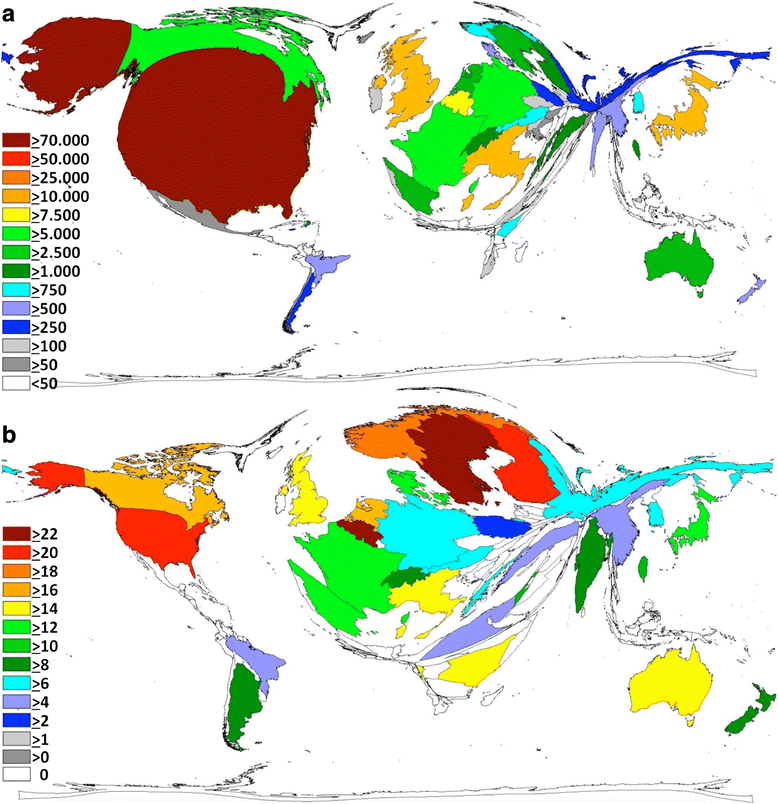
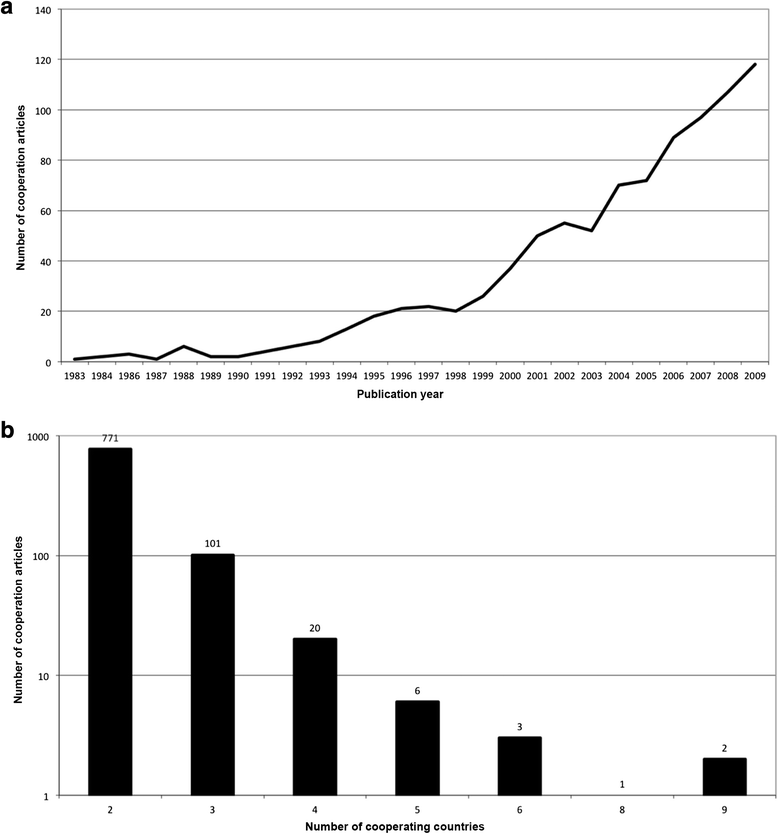
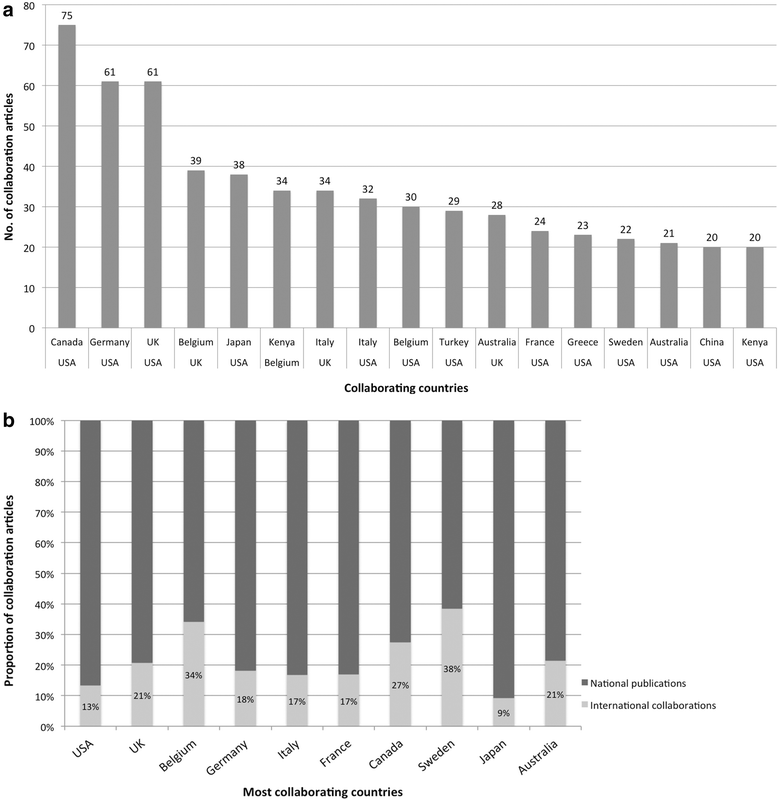
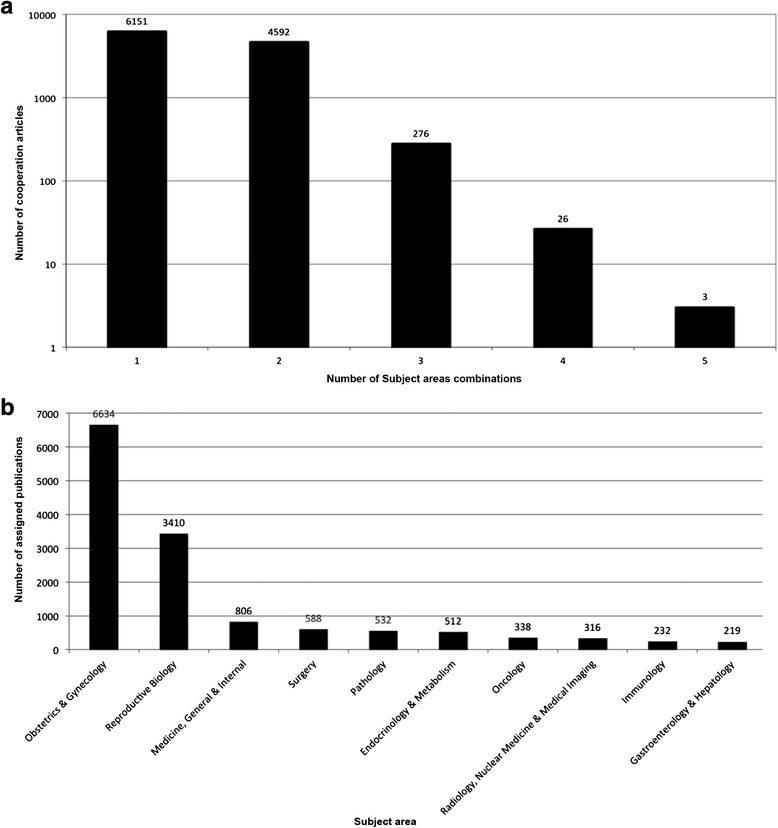

Similar articles
-
Ectopic pregnancy: exploration of its global research architecture using density-equalising mapping and socioeconomic benchmarks.BMJ Open. 2017 Oct 11;7(10):e018394. doi: 10.1136/bmjopen-2017-018394. BMJ Open. 2017. PMID: 29025848 Free PMC article.
-
Global architecture of gestational diabetes research: density-equalizing mapping studies and gender analysis.Nutr J. 2016 Apr 4;15:36. doi: 10.1186/s12937-016-0154-0. Nutr J. 2016. PMID: 27044432 Free PMC article. Review.
-
Density equalizing mapping of the global tuberculosis research architecture.Tuberculosis (Edinb). 2015 Jul;95(4):515-22. doi: 10.1016/j.tube.2015.05.003. Epub 2015 May 23. Tuberculosis (Edinb). 2015. PMID: 26032100
-
Rotavirus - Global research density equalizing mapping and gender analysis.Vaccine. 2016 Jan 2;34(1):90-100. doi: 10.1016/j.vaccine.2015.11.002. Epub 2015 Nov 21. Vaccine. 2016. PMID: 26611203
-
[Density equalizing mapping of obesity: analysis of a global epidemic].Z Gastroenterol. 2015 Jun;53(6):553-61. doi: 10.1055/s-0034-1398938. Epub 2015 Jun 15. Z Gastroenterol. 2015. PMID: 26075366 Review. German.
Cited by
-
Exercise and endometriosis-is there a promising future? A narrative review.Ir J Med Sci. 2024 Oct;193(5):2375-2387. doi: 10.1007/s11845-024-03733-2. Epub 2024 Jun 25. Ir J Med Sci. 2024. PMID: 38916808 Review.
-
World-wide research architecture of vitamin D research: density-equalizing mapping studies and socio-economic analysis.Nutr J. 2018 Jan 6;17(1):3. doi: 10.1186/s12937-018-0313-6. Nutr J. 2018. PMID: 29306332 Free PMC article.
-
Ectopic pregnancy: exploration of its global research architecture using density-equalising mapping and socioeconomic benchmarks.BMJ Open. 2017 Oct 11;7(10):e018394. doi: 10.1136/bmjopen-2017-018394. BMJ Open. 2017. PMID: 29025848 Free PMC article.
-
An assessment of Polish women's level of knowledge about endometriosis: a pilot study.BMC Womens Health. 2021 Dec 7;21(1):404. doi: 10.1186/s12905-021-01556-2. BMC Womens Health. 2021. PMID: 34876118 Free PMC article.
-
Stigma and social support and their impact on quality of life and self-esteem among women with endometriosis in Latin-America and the Caribbean.PLOS Glob Public Health. 2022 Dec 2;2(12):e0001329. doi: 10.1371/journal.pgph.0001329. eCollection 2022. PLOS Glob Public Health. 2022. PMID: 36962832 Free PMC article.
References
-
- Simoens S, Dunselman G, Dirksen C, Hummelshoj L, Bokor A, Brandes I, Brodszky V, Canis M, Colombo GL, DeLeire T, et al. The burden of endometriosis: costs and quality of life of women with endometriosis and treated in referral centres. Hum Reprod. 2012;27:1292–1299. doi: 10.1093/humrep/des073. - DOI - PubMed
MeSH terms
LinkOut - more resources
Full Text Sources
Other Literature Sources
Medical
Miscellaneous

